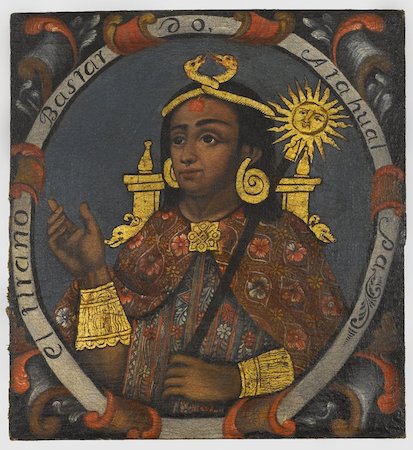
As it is known in the period between 1400s and 1500s, the encounter of colonizers in South America and Natives occurred in between humble yet powerful empires. Scholar Carla Colon highlights this history in relation to the country of Bolivia through her research of the Viceroyalty of Peru which involves the encounters between the Atahualpa Inka King, and the Spaniard Francisco Pizarro.
The Inka Empire was so massive it included parts of Bolivia, Colombia, Ecuador and Peru. The arrival of the Spanish allowed for the appropriation of European portraits by the Inka people. The painting above signifies the last Sapa Inka before the Spanish Conquest of 1534. The portrait is part of a collection of 14 and were made in the 18thcentury, not by the common people, but by Inka elite. This was a manner as to how those elite in the Inka community boasted and asserted their privilege and political power within the Spaniard Viceroyalty.
In present day one finds this holds true given the find of the painting collection in the home of a Cacique or indigenous chief. Nonetheless, the art was not boldly displayed given fears of rebellion in the 18th century, such as Tupac Amaru II’s in 1780-81. One could say the art could have threatened Spaniards’ generational strength given its commemoration of the murder of the last Sipa Inka; The King Atahualpa, commemorated on the art piece, had been kidnapped after Francisco Pizarro’s massacre and despite having complied with the Spanish, meeting their demands of a room full of gold, Atahualpa was executed through strangulation.
Works Cited
Colon, Carla, and Carla Colon. “Fourteen Portraits of the Inka Kings.” Smarthistory, smarthistory.org/fourteen-portraits-of-the-inka-kings/.
